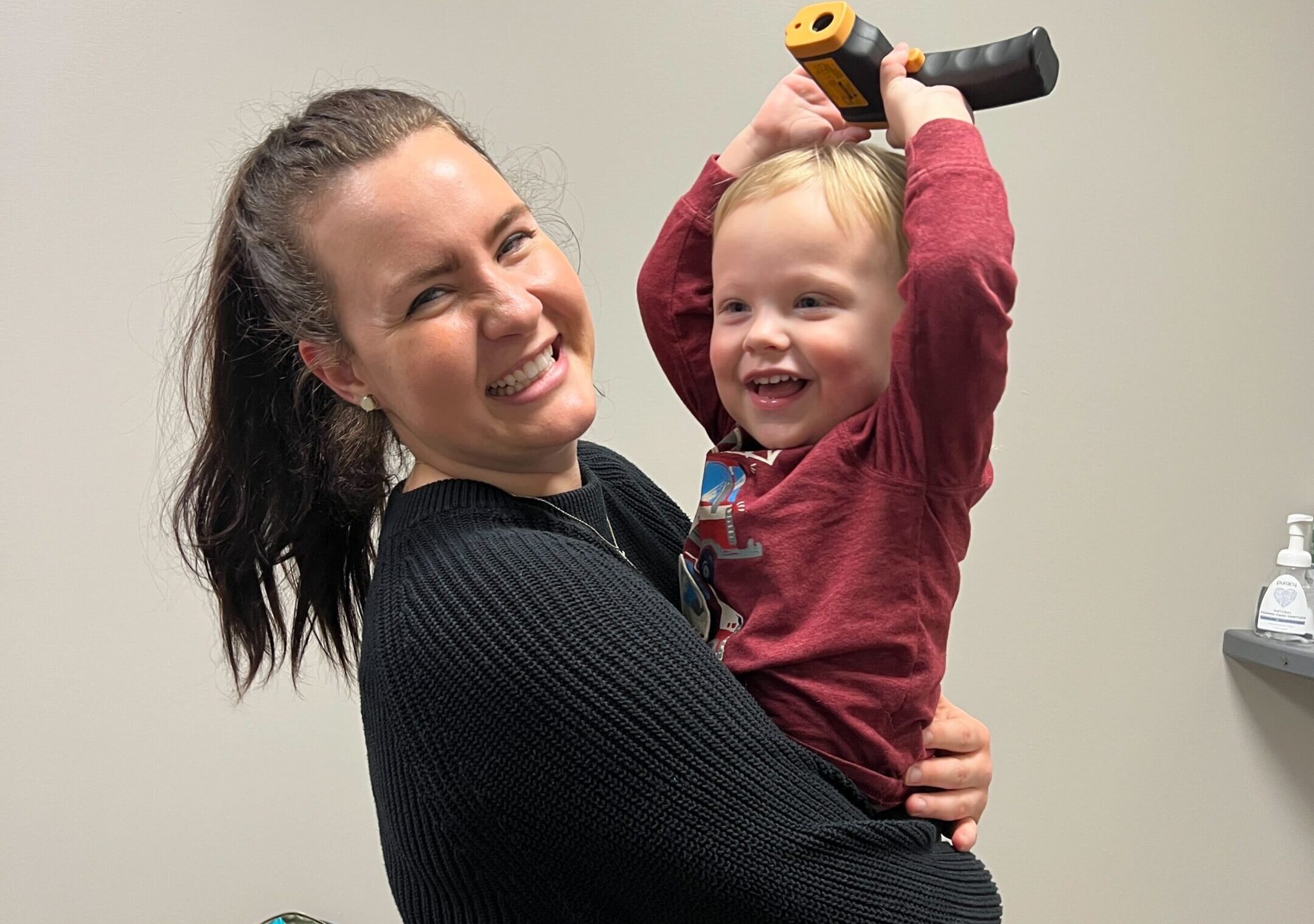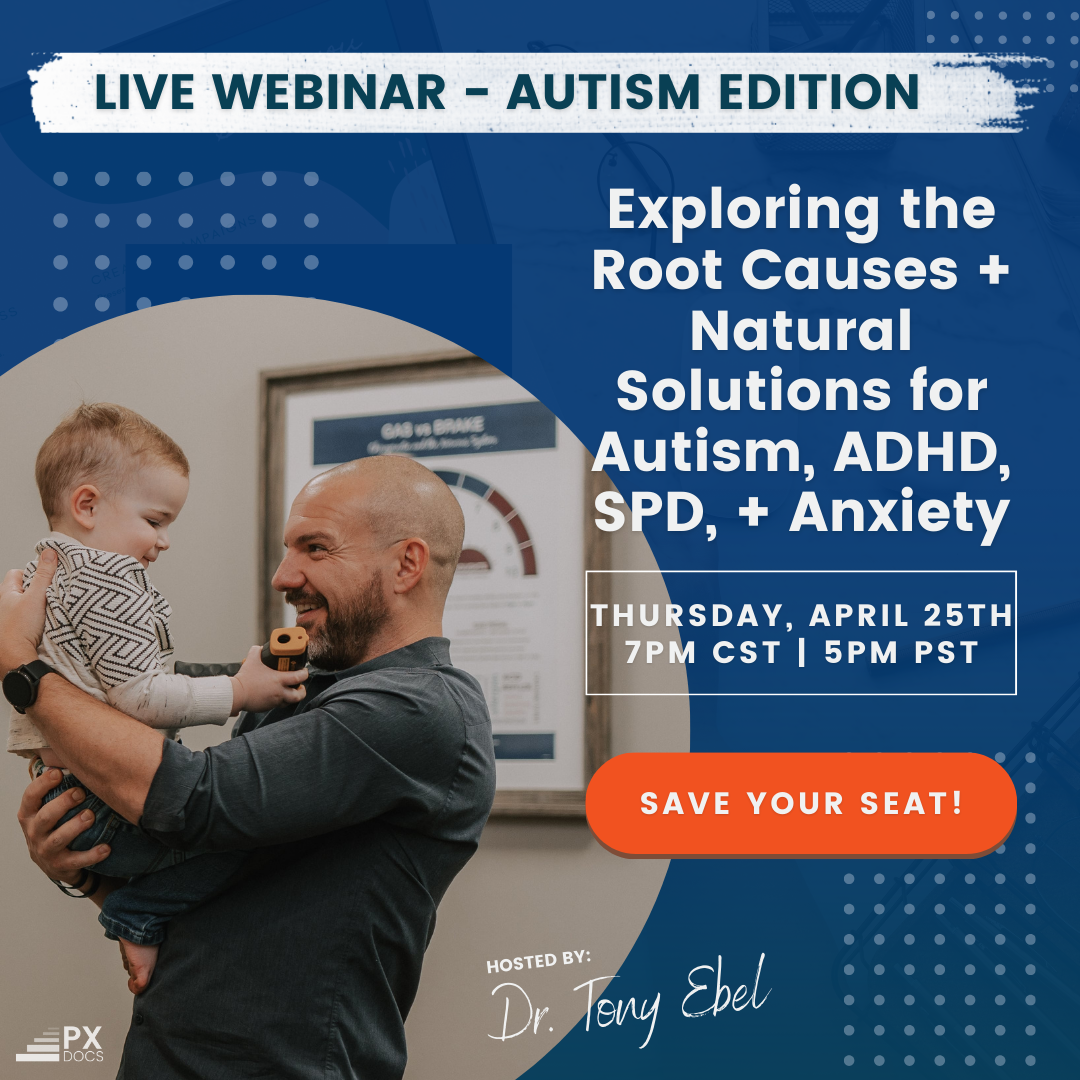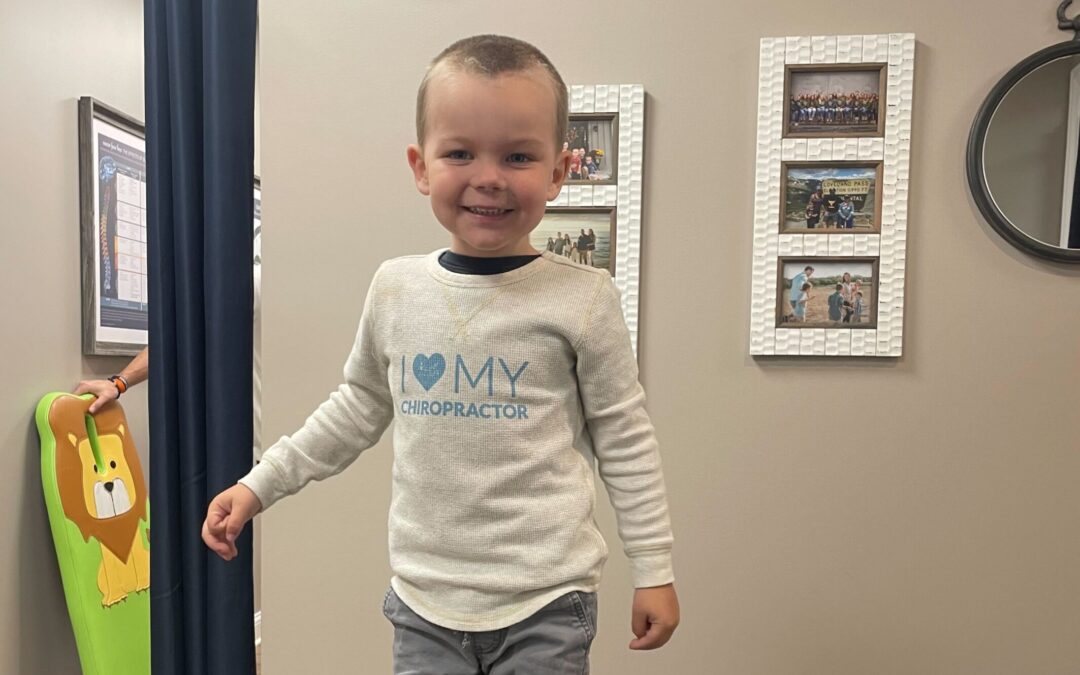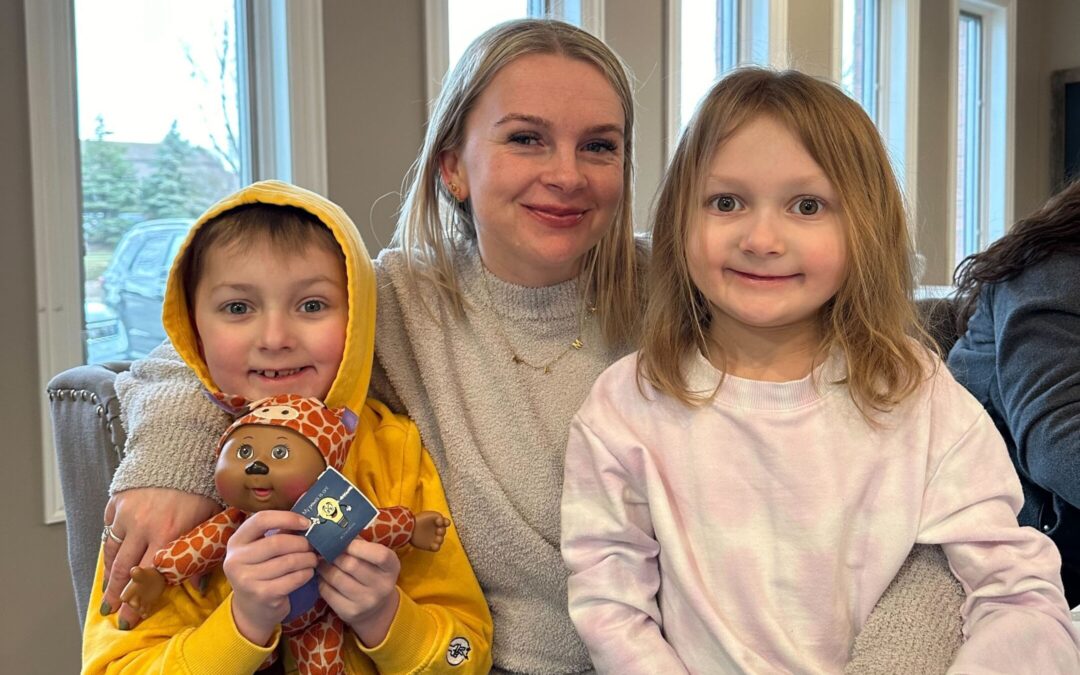It’s been a long time since I remember a child presenting to our clinic with just one singular health challenge or condition. Nearly every child over age 3 has intake paperwork with check boxes next to gut and digestive issues, respiratory and immune challenges, and neurological conditions such as sensory integration disorder, ADHD, and anxiety.
It’s absolutely heartbreaking seeing so many kids with multiple chronic health conditions at such a young age.
If you know what you’re looking for, in just a matter of minutes, you can see an absolute “perfect storm” pattern emerge, with each and every condition linked to the one thing we’ll discuss in this article – subluxation.
This article will explain exactly what subluxation is, where it comes from, and how the stress and dysfunction it causes within the nervous system correlates with a multitude of health challenges in kids and families.
What Exactly is a subluxation?
We like to teach our patients that subluxation has three (3) main components:
- Misalignment
- Fixation & Tension
- Neurological Interference & Imbalance
While the first two components comprise the biomechanical elements of subluxation within the NeuroSpinal System, the third component causes all the trouble.
Breaking down that third element even further, we see that the neurological interference comes from the effect that the fixation and decreased range of motion has on the central nervous system. You may have heard the phrase “motion is life” before, and it’s absolutely true.
The #1 thing that keeps the brain and nervous system active, engaged, and functioning at a high level is stimulation from movement and physical activity. The term for this is proprioception, which is the perception or awareness of the position and movement of the body.
The spine has by far the highest density of proprioceptors in the body. The upper neck has more than any other area, making it especially sensitive to any physical injury leading to misalignment and tension (subluxation). This is why we feel by far, the #1 most overlooked cause of subluxation and both acute and chronic health conditions in kids is physical birth trauma to the neck, brainstem, and spine during labor and delivery.
Putting it all together, when subluxation is present, there is decreased proprioceptive input into the brain and nervous system, which in turn allows increased nociception to get in. Nociception is noxious, stressful, and potentially harmful stimuli reaching the central nervous system, and it causes the nervous system to move into sympathetic fight-or-flight mode, known as dysautonomia.
It goes so far beyond just looking at spinal joints and partial dislocations. Those who understand the role of subluxation in health look deeper into the neurological disruptions and dysfunction and get to work restoring and improving those components with each and every chiropractic adjustment.
Subluxation is the most overlooked cause of various health issues that can be helped and cared for by a neurologically-focused chiropractor. One of the surest signs a patient’s condition is primarily linked to subluxation is when all medical tests and treatments come up empty. Despite seeing a long list of doctors and specialists, parents still do not have the answers and action steps they seek!
What causes subluxation?
So what causes subluxation, exactly? Put simply – stress and toxicity overload.
While stress is actually a normal, healthy part of life, helping us to gain resiliency, strength, and adaptability from infancy on… what the Perfect Storm teaches us is that we have far too much stress and toxicity in our current environments. And if a child is exposed to high amounts of stress and toxicity early in life before their nervous system has developed enough to handle it, then subluxation and dysautonomia set in, and the storm starts to brew.
What does that look like exactly for millions of children today?
Research has now clearly shown that pregnant mothers face more stress and anxiety than ever before. With all the added stress and tension on their nervous systems, it can lead to the baby winding up stuck in various abnormal positions in-utero, such as breech or forward-facing, which places added stress on their spine and nervous system.
From there, our labor and delivery system has turned into medical intervention nearly every single time, shoving health and natural birth to the side and significantly increasing the rates of both obvious and hidden birth trauma.
This study even found that 99 out of 100 healthy newborns had at least one “somatic dysfunction” pattern within the first 72 hours of life, which is the osteopathic term for subluxation. The vast majority of the dysfunction was found in the cranial area and cervical (neck) region, which makes sense given how much physical strain, tension, and pulling can be placed on those regions during the birth process, especially if interventions are involved.
Then from there, a stressed and subluxated infant deals with colic, reflux, constipation, and repeated ear infections. Then each use of an antibiotic in a child under the age of three dramatically increases their risk of chronic illness later on in life, and things like Miralax increase unwanted behaviors such as hyperactivity and aggression.
In chiropractic, we summarize and simplify things by teaching our patients about the 3T’s — Traumas, Toxins, and Thoughts.
We’re all going to face these 3Ts in life, but when our kids face so many of them so early on, it allows subluxation to set in. That subluxation creates significant, chronic imbalance and dysfunction within the nervous system, which then, in turn, causes dysfunction in motor tone and development as well as all other major systems — gut, immune, respiratory, mental, emotional, social, and so on.
All forms of excessive stress negatively affect the nervous system similarly, causing it to go into a pattern of tension and a fight-or-flight response.
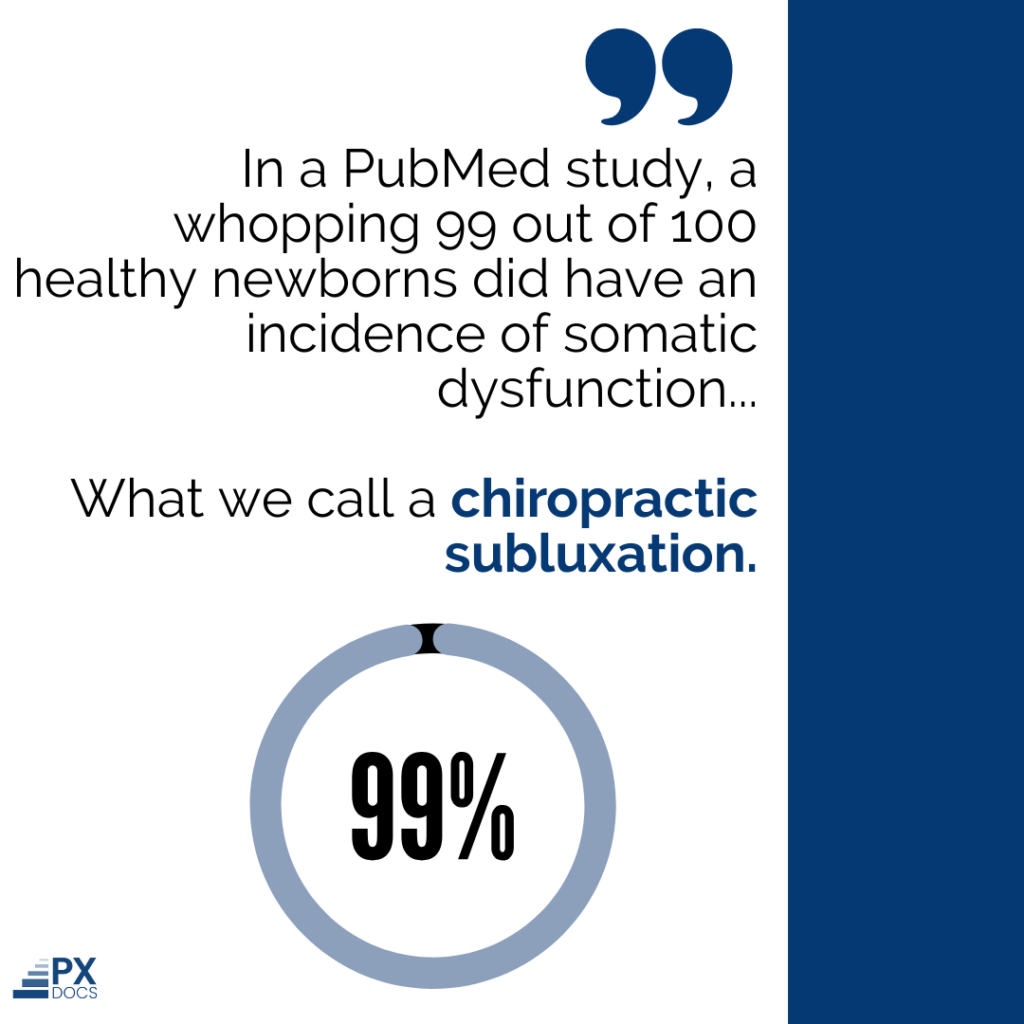
What are the signs of subluxation?
Initially, subluxation creates excessive tension and a “wound up” response, which shows up early in a child’s life as colic, difficulty sleeping, and frequent tantrums and meltdowns. But then, over time, as things turn more long-lasting and chronic, subluxation can cause neurological fatigue and exhaustion.
In addition, these are some of the most common signs of subluxation:
- Colic
- Difficulty Sleeping
- Chronic Ear Infections and Immune Challenges
- Constipation and Gut Issues
- Gross and Fine Motor Challenges
- Developmental Delays
- Frequent Meltdowns and Tantrums
- Sensory Integration Disorder
- Focus & Concentration Challenges
- Hyperactivity and Impulsivity
- Emotional Regulation Challenges
- Chronic Pain & Tension
- Fatigue and Exhaustion
- Functional Movement Disorders
SYMPTOMS OF SPINAL SUBLUXATION
In the intricate dance of the spine, each vertebra is a crucial performer, and when one falters, the harmony of movement is disrupted. This is the essence of spinal subluxation—a misstep in alignment that can manifest as a chorus of discomforts. You may feel the pang of pain in your back or neck, a signal that something is amiss in this delicate column of bones. Headaches may emerge, a throbbing audience to the tension, as if your body is sounding an alarm for attention. Movement might become a challenge, leaving you with a stiffness that hinders your daily choreography. These symptoms whisper—or sometimes shout—the need for care. They are your body’s way of communicating that the spinal integrity, which supports you through life’s performances, requires a helping hand to restore its natural poise and rhythm.
How do you find and Take Care of subluxation?
By far, the most important tool our Pediatric Experience trained chiropractors are trained to use is the INSiGHT Subluxation Scanning Technology. In just a 10-15 minute exam, these scans can find, measure, and locate dysautonomia and other elements of subluxation.
Doing so allows PX Docs to then create an exact, personalized, and customized adjusting care plan for that child and patient. The INSiGHT scans take all the guesswork out of it and bring the chiropractic exam and detection of subluxation into the modern era.
Other modes of finding subluxation include postural, physical, and other neurological exam components. But the PX Doc all starts with our technology pictured below.
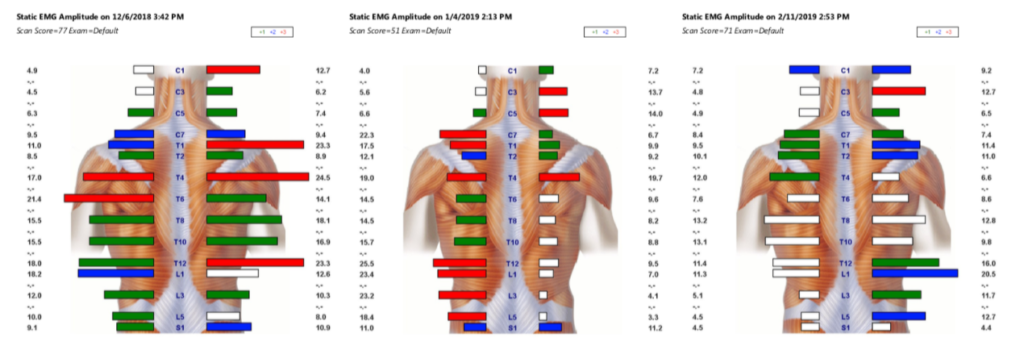
Now fixing it is simple yet powerful and complex simultaneously. A trained pediatric and neurologically-focused chiropractor uses an adjusting system that is safe, gentle, and wildly effective at restoring function and balance to the nervous system.
The coolest thing about this kind of chiropractic is that a regular adjusting visit lasts just a few minutes, easily fitting into a family’s busy schedule and also being fun and enjoyable for the child! When whole families come in to get adjusted, the kids fight and compete for who can jump on the table first. They love it so much.
Get started today!
There is help available for subluxation. The answers and help you seek mom and dad, are inside your local PX Doc’s office! Our doctors take the time to really listen, dive deep into your child’s case history to find the cause(s) of their health challenges, and then get right to work finding them via the INSiGHT Scanning Technology!
Head on over to our PX Docs Directory and find your local PX Doc today. We can’t wait to hear your child’s story of healing, thriving, and smiling!

